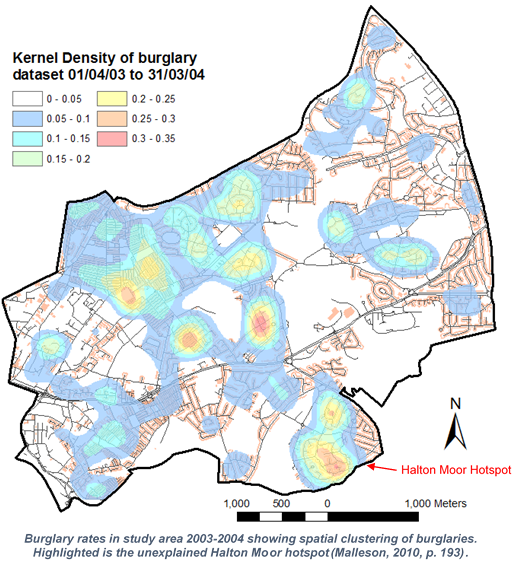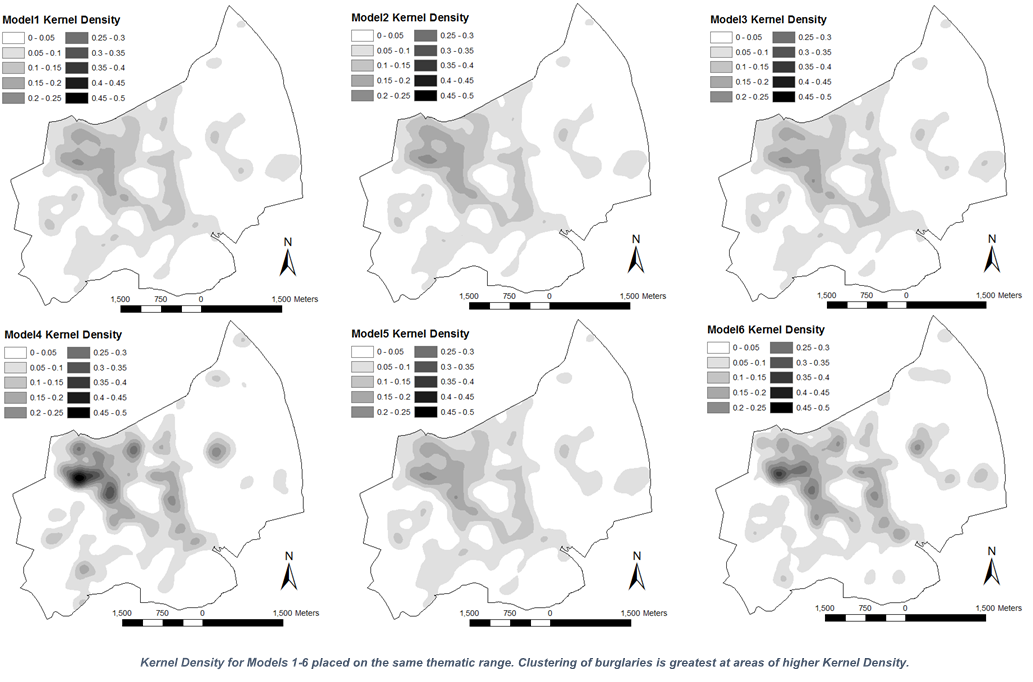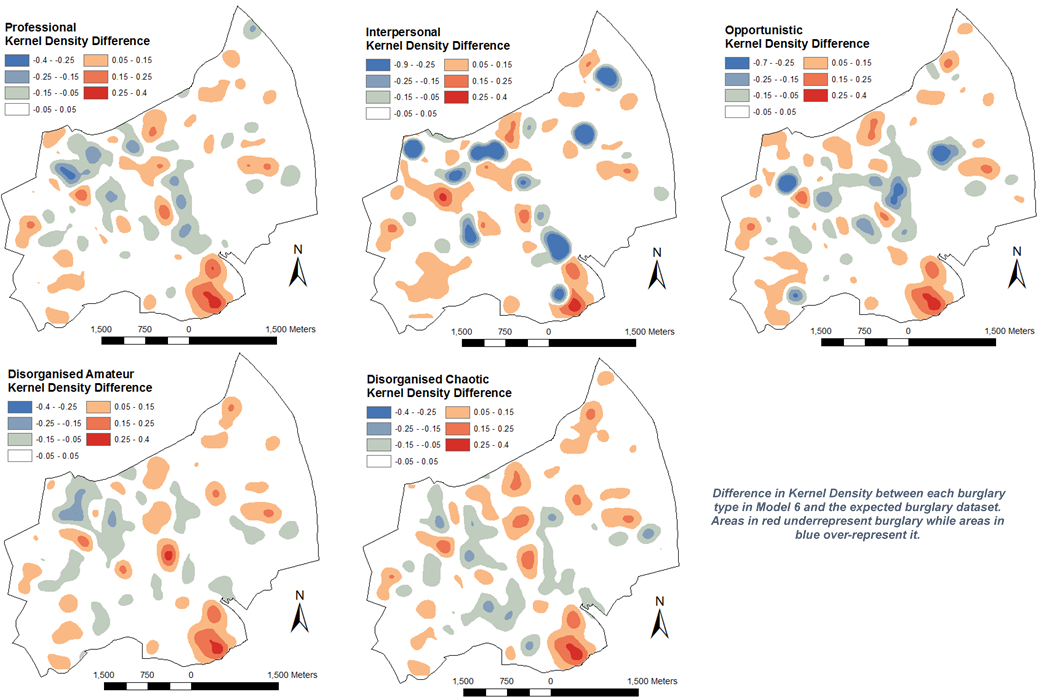Postgraduate Dissertation: Understanding a burglar’s target selection process through the adaptation of an agent-based burglary model using recent qualitative research
To download a PDF of this research, click here.
Overview
For my postgraduate dissertation, I undertook work looking into the area of predictive policing; specifically, the use of Agent-Based Models (ABMs) to simulate spatial patterns of burglary. I used an existing ABM created by Nick Malleson (Malleson, 2010) and modified it to try and improve its predictive ability. The upgrades made were influenced by a recent piece of research by Nick Addis (Addis, 2017) who interviewed incarcerated burglars in the West Yorkshire area (the same area as the one that the initial model was tested on) to establish their target selection process. Insights gained from the interviewees were translated into iterations of the model which were then run and the results analysed.
The models created related to several factors highlighted during the interviews. The effect of attracting and deterring factors were studied, with separate models being created containing agents that were drawn to South Asian communities, deterred by houses containing elderly residents and deterred by properties containing young children. Furthermore, the claim by some interviewees that they would enter occupied houses and houses with complex security systems was also analysed. Finally, a model was created containing burglar agents that exhibited five different types of behaviour: professional burglars, those that acted on opportunity, those motivated by interpersonal motives, disorganised amateur burglars and disorganised chaotic burglars.
The results for each model run were analysed according to their performance in three main areas. The model’s hotspot prediction capability was assessed using kernel density analysis, the level of clustering exhibited was tested through the calculation of L Function values and the distance of the journey to crime was measured and analysed.
Results
Results showed that each model created was able to improve upon some aspect of the initial model, however none could consistently return more accurate burglary patterns across all methods of analysis. However, the report finds evidence that the accuracy of the model’s predictive capability may be improved through the implementation of several behavioural elements.
- Evidence was found to suggest that the morality of a burglar may play a part in their target selection process, with the models in which the agent avoids elderly residences and those with young children on moral grounds being found to improve the fit of the model.
- The implementation of opportunistic burglary in the model is believed to explain much of the variation between the models results and the real-life data, providing an interesting avenue for further work in accurately modelling this complex phenomenon.
- Burglaries motivated by interpersonal means rather than for monetary gain were found to potentially explain areas of real-life burglary incidence that were otherwise unable to be modelled. A challenge for future research is implementing this motivation type correctly to predict burglaries that occur for this reason.
References
Addis, N. J., 2017. A Mixed Methods Approach to Understanding the Target Selection Criteria of Burglars within Leeds. Ph.D. Thesis: University of Leeds.
Malleson, N., 2010. Agent-based modelling of burglary. Ph.D. Thesis: University of Leeds.


